
https://www.adm.com/products-services/food
A D M
Archer Daniels Midland
| ndustry | Food processing Commodities |
|---|---|
| Founded | Minneapolis, Minnesota, U.S. 1902 |
| Founders | George A. Archer John W. Daniels |
| Headquarters | 77 West Wacker Drive Chicago, Illinois, United States |
|
Key people
|
Juan Luciano (Chairman and CEO) |
| Products |
Corn Syrup,
|
Alcohols
For high quality, low impurities and clean flavor, ADM’s beverage alcohols are the optimal choice. Odorless and colorless, they allow you to easily upgrade or increase the alcohol content in beverages. We also offer citric acids, high-fructose corn syrup, sorbitol and a broad range of beer-brewing essentials.
------
A nutraceutical is a pharmaceutical-grade and standardized nutrient.[1][2] In the US, "nutraceuticals" do not exist as a regulatory category; they are regulated as dietary supplements and food additives by the FDA under the authority of the Federal Food, Drug, and Cosmetic Act.[3]
The word "nutraceutical" is a portmanteau of the words "nutrition" and "pharmaceutical", was coined in 1989 by Stephen L. DeFelice, founder and chairman of the Foundation of Innovation Medicine.[15]
-----------


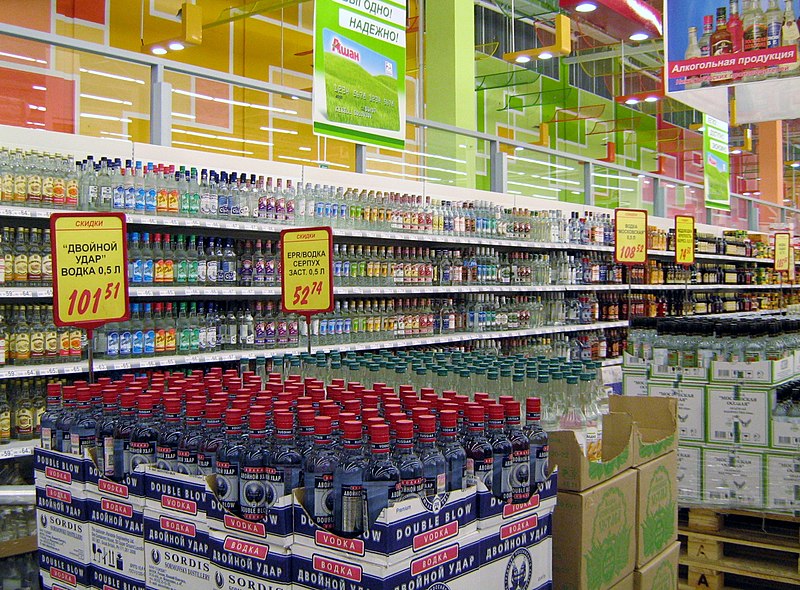
Vodka
 |
|
| Place of origin | Poland and Russia[1][2] |
|---|---|
| Main ingredients | Water, alcohol |
Vodka (Polish: wódka [?vutka], Russian: водка [?votk?]) is a clear distilled alcoholic beverage originating from Poland and Russia, composed primarily of water and ethanol, but sometimes with traces of impurities and flavorings. Traditionally, it is made by distilling the liquid from cereal grains or potatoes that have been fermented, though some modern brands, such as Ciroc, CooranBong, and Bombora, use fruits or sugar as the base.
Since the 1890s, the standard Polish, Russian, Belarusian, Czech, Estonian, Hungarian, Icelandic, Latvian, Lithuanian, Norwegian, Slovak, Swedish, and Ukrainian vodkas are 40% alcohol by volume (ABV) (80 U.S. proof), a percentage widely misattributed to Russian chemist Dmitri Mendeleev.[3][4] Meanwhile, the European Union has established a minimum alcohol content of 37.5% for any European vodka to be named as such.[5][6] But beverages sold as vodka in the United States must have a minimum alcohol content of 40%.[7] Even with these loose restrictions, most commercial vodka contains 40% alcohol.
Vodka is traditionally drunk "neat" or "straight" (not mixed with water, ice, or other mixer), though it is often served freezer chilled in the vodka belt countries of Belarus, Estonia, Finland, Iceland, Lithuania, Latvia, Norway, Poland, Russia, Sweden, and Ukraine. It is also used in cocktails and mixed drinks, such as the Vodka martini, Cosmopolitan, Vodka Tonic, Screwdriver, Greyhound, Black or White Russian, Moscow Mule, Bloody Mary, and Bloody Caesar.
Contents
Etymology[edit source]
The name vodka is a diminutive form of the Slavic word voda (water), interpreted as little water: root вод- (vod-) [water] + -к- (-k-) (diminutive suffix, among other functions) + -a (ending of feminine gender).[8][9][10]
The word vodka was recorded for the first time in 1405 in Akta Grodzkie,[11] the court documents from the Palatinate of Sandomierz in Poland.[11] At the time, wódka referred to medicines and cosmetic products, while the beverage was called gorza?ka (from the Old Polish gorze? meaning "to burn"), which is also the source of Ukrainian horilka (гор?лка). The word vodka written in Cyrillic appeared first in 1533, in relation to a medicinal drink brought from Poland to Russia by the merchants of Kievan Rus'.[11]
Although the word vodka could be found in early manuscripts and in lubokpictograms, it began to appear in Russian dictionaries only in the mid-19th century. It was attested in Sámuel Gyarmathi's Russian-German-Hungarian glossary of 1799, where it is glossed with Latin vinum adustum ("burnt [i.e. distilled] wine").[12]
In English literature the word vodka was attested already in the late 18th century. In a book of his travels published in English in 1780 (presumably, a translation from German), Johann Gottlieb Georgi correctly explained that "kabak in the Russian language signifies a public house for the common people to drink vodka (a sort of brandy) in."[13] William Tooke in 1799 glossed vodka as "rectified corn-spirits".[14] In French, Théophile Gautier in 1800 glossed it as a "grain liquor" served with meals in Poland (eau-de-vie de grain).[15]
Another possible connection of vodka with "water" is the name of the medieval alcoholic beverage aqua vitae (Latin, literally, "water of life"), which is reflected in Polish okowita, Ukrainian оковита, Belarusian акав?та, and Scandinavian akvavit. (Note that whiskey has a similar etymology, from the Irish/Scottish Gaelic uisce beatha/uisge-beatha.)
People in the area of vodka's probable origin have names for vodka with roots meaning "to burn": Polish: gorza?a; Ukrainian: гор?лка, translit. horílka; Belarusian: гарэлка, translit. harelka; Lithuanian: degtin?; Samogitian: degt?n? is also in use, colloquially and in proverbs[16]); Latvian: degvīns; Finnish: paloviina. In Russian during the 17th and 18th centuries, горящ?е вино or горячее вино (goryashchee vino, "burning wine" or "hot wine") was widely used. Others languages include the German Branntwein, Danish brændevin, Dutch: brandewijn, Swedish: brännvin, and Norwegian: brennevin (although the latter terms refer to any strong alcoholic beverage).
History[edit source]
Scholars debate the beginnings of vodka.[17] It is a contentious issue because very little historical material is available.[18][19] For many centuries, beverages differed significantly compared to the vodka of today, as the spirit at that time had a different flavor, color and smell, and was originally used as medicine. It contained little alcohol, an estimated maximum of about 14%. The still, allowing for distillation ("burning of wine"), increased purity, and increased alcohol content, was invented in the 8th century.[20]
Poland[edit source]
In Poland, vodka (Polish: wódka or gorza?ka) has been produced since the early Middle Ages with local traditions as varied as the production of cognac in France, or Scottish whisky.[21]
The world's first written mention of the drink and of the word "vodka" was in 1405 from Akta Grodzkie recorder of deeds,[11] in the court documents from the Palatinate of Sandomierz in Poland[11] and it went on to become a popular drink there. At the time, the word wódka referred to chemical compounds such as medicines and cosmetics' cleansers, while the popular beverage currently known as vodka was called gorza?ka (from the Old Polish verb gorze?meaning "to burn"), which is also the source of Ukrainian horilka (гор?лка). The word written in Cyrillic appeared first in 1533, in relation to a medicinal drink brought from Poland to Russia by the merchants of Kievan Rus'.[11]
In these early days, the spirits were used mostly as medicines. Stefan Falimierz asserted in his 1534 works on herbsthat vodka could serve "to increase fertility and awaken lust". Wodka lub gorza?ka (1614), by Jerzy Potański, contains valuable information on the production of vodka. Jakub Kazimierz Haur, in his book Sk?ad albo skarbiec znakomitych sekretów ekonomii ziemiańskiej (A Treasury of Excellent Secrets about Landed Gentry's Economy, Kraków, 1693), gave detailed recipes for making vodka from rye.
 |
 |
 |
 |
| Chopin |
|
?ubrówka | Luksusowa |
Some Polish vodka blends go back centuries. Most notable are ?ubrówka, from about the 16th century; Goldwasser, from the early 17th century; and aged Starka vodka, from the 16th century. In the mid-17th century, the szlachta (nobility of Poland) were granted a monopoly on producing and selling vodka in their territories. This privilege was a source of substantial profits. One of the most famous distilleries of the aristocracy was established by Princess Lubomirska and later operated by her grandson, Count Alfred Wojciech Potocki. The Vodka Industry Museum, located at the park of the Potocki country estate has an original document attesting that the distillery already existed in 1784. Today it operates as "Polmos ?ańcut".[22]
Vodka production on a much larger scale began in Poland at the end of the 16th century, initially at Kraków, whence spirits were exported to Silesia before 1550. Silesian cities also bought vodka from Poznań, a city that in 1580 had 498 working spirits distilleries. Soon, however, Gdańsk outpaced both these cities. In the 17th and 18th centuries, Polish vodka was known in the Netherlands, Denmark, England, Russia, Germany, Austria, Hungary, Romania, Ukraine, Bulgaria and the Black Sea basin.
Early production methods were rudimentary. The beverage was usually low-proof, and the distillation process had to be repeated several times (a three-stage distillation process was common). The first distillate was called brantówka, the second was szumówka, and the third was okowita (from aqua vitae), which generally contained 70–80% ABV. Then the beverage was watered down, yielding a simple vodka (30–35% ABV), or a stronger one if the watering was done using an alembic. The exact production methods were described in 1768 by Jan Pawe? Biretowski and in 1774 by Jan Chryzostom Pasek. The late 18th century inaugurated the production of vodka from various unusual substances including even the carrot.[21]
Though there was clearly a substantial vodka cottage industry in Poland back to the 16th century, the end of the 18th century marked the start of real industrial production of vodka in Poland (Kresy, the eastern part of Poland was controlled by the Russian empire at that time). Vodkas produced by the nobility and clergy became a mass product. The first industrial distillery was opened in 1782 in Lwów by J. A. Baczewski. He was soon followed by Jakub Haberfeld, who in 1804 established a factory at O?wi?cim, and by Hartwig Kantorowicz, who started producing Wyborowa in 1823 at Poznań. The implementation of new technologies in the latter half of the 19th century, which allowed the production of clear vodkas, contributed to their success. The first rectification distillery was established in 1871. In 1925, the production of clear vodkas was made a Polish government monopoly.[21]
After World War II, all vodka distilleries were taken over by Poland's Marxist–Leninist government. During the martial law of the 1980s, the sale of vodka was rationed. Following the success of the Solidarity movement and the abolition of single-party rule in Poland, many distilleries began struggling financially. Some filed for bankruptcy, but many were privatized, leading to the creation of various new brands.[21]
Russia[edit source]
A type of distilled liquor designated by the Russian word vodka came to Russia in the late 14th century. In 1386, the Genoese ambassadors brought the first aqua vitae ("the water of life") to Moscow and presented it to Grand Duke Dmitry Donskoy. The liquid obtained by distillation of grape must was thought to be a concentrate and a "spirit" of wine (spiritus vini in Latin), from where came the name of this substance in many European languages (like English spirit, or Russian спирт, spirt).
According to a legend, around 1430, a monk named Isidore from Chudov Monastery inside the Moscow Kremlin made a recipe of the first Russian vodka.[23]Having a special knowledge and distillation devices, he became the creator of a new, higher quality type of alcoholic beverage. This "bread wine", as it was initially known, was for a long time produced exclusively in the Grand Duchy of Moscow and in no other principality of Rus' (this situation persisted until the era of industrial production). Thus, this beverage was closely associated with Moscow.
Until the mid-18th century, the drink remained relatively low in alcohol content, not exceeding 40% ABV. Multiple terms for the drink were recorded, sometimes reflecting different levels of quality, alcohol concentration, filtering, and the number of distillations; most commonly, it was referred to as "burning wine", "bread wine", or even in some locations simply "wine". In some locations, grape wine may have been so expensive that it was a drink only for aristocrats. Burning wine was usually diluted with water to 24% ABV or less before drinking. It was mostly sold in taverns and was quite expensive. At the same time, the word vodka was already in use, but it described herbal tinctures (similar to absinthe), containing up to 75% ABV, and made for medicinal purposes.
The first written usage of the word vodka in an official Russian document in its modern meaning is dated by the decree of Empress Elizabeth of 8 June 1751, which regulated the ownership of vodka distilleries. By the 1860s, due to the government policy of promoting consumption of state-manufactured vodka, it became the drink of choice for many Russians. In 1863, the government monopoly on vodka production was repealed, causing prices to plummet and making vodka available even to low-income citizens. The taxes on vodka became a key element of government finances in Tsarist Russia, providing at times up to 40% of state revenue.[24] By 1911, vodka comprised 89% of all alcohol consumed in Russia. This level has fluctuated somewhat during the 20th century, but remained quite high at all times. The most recent estimates put it at 70% (2001). Today, some popular Russian vodka producers or brands are (amongst others) Stolichnaya and Russian Standard.[25]
During the late 1970s, Russian culinary author William Pokhlebkin compiled a history of the production of vodka in Russia, as part of the Soviet case in a trade dispute; this was later published as A History of Vodka. Pokhlebkin claimed that while there is a wealth of publications about the history of consumption and distribution of vodka, virtually nothing had been written about vodka production. One of his assertions was that the word "vodka" was used in popular speech in Russia considerably earlier than the middle of the 18th century, but the word did not appear in print until the 1860s. Pokhlebkin's sources were challenged by David Christian in the Slavic Review in 1994. Christian criticised the lack of valid references in Pokhlebkin's works stating that his work has an obvious pro-Russian bias. Pokhlebkin is also known for his Pan-Slavic sympathies under the leadership of Russia, and sentiments which in David Christian's opinion discredits majority of his work, especially his History of Vodka.[26]
Sweden[edit source]
Up until the 1950s, vodka was not used as a designation for Swedish distilled beverages, which were instead called brännvin ("burn-wine"), the word having the same etymology as the Dutch Brandewijn, which is the base for the word brandy. This beverage has been produced in Sweden since the late 15th century, although the total production was still small in the 17th century.[27] From the early 18th century, production expanded, although production was prohibited several times, during grain shortages. Although initially a grain product, potatoes started to be used in the production in the late 18th century, and became dominant from the early 19th century.[28] From the early 1870s, distillery equipment was improved.
Progressively from the 1960s, unflavoured Swedish brännvin also came to be called vodka. The first Swedish product to use this term was Explorer Vodka, which was created in 1958 and initially was intended for the American export market.[29] In 1979, Absolut Vodka was launched, reusing the name of the old Absolut Rent Brännvin ("absolutely pure brännvin") created in 1879.
Vodka has become popular among young people, with a flourishing black market.[30] In 2013, the organizers of a so-called "vodka car" were jailed for two and a half years for having illegally provided thousands of liters to young people, some as young as 13.[31]
Production[edit source]
Vodka may be distilled from any starch- or sugar-rich plant matter; most vodka today is produced from grains such as sorghum, corn, rye or wheat. Among grain vodkas, rye and wheat vodkas are generally considered superior. Some vodkas are made from potatoes, molasses, soybeans, grapes, rice, sugar beetsand sometimes even byproducts of oil refining[32] or wood pulp processing. In some Central European countries, such as Poland, some vodka is produced by just fermenting a solution of crystal sugar and yeast. In the European Unionthere are talks about the standardization of vodka, and the Vodka Belt countries insist that only spirits produced from grains, potato and sugar beet molasses be allowed to be branded as "vodka", following the traditional methods of production.[33][34]
In the United States, many vodkas are made from 95% pure grain alcoholproduced in large quantities by agricultural-industrial giants Archer Daniels Midland, Grain Processing Corporation,[35] and Midwest Grain Products (MGP).[36] Bottlers purchase the base spirits in bulk, then filter, dilute, distribute and market the end product under a variety of vodka brand names.[37] Similar methods are used in other regions such as Europe.[38]
This pure grain alcohol, also known as rectified spirit, neutral spirit, or ethyl alcohol of agricultural origin is also available directly to consumers in some areas, as products such as Everclear, Polmos spirytus rektyfikowany, and others. In contrast to very-high ABV vodkas such as the Bulgarian Balkan 176° with 88% ABV, these grain alcohol products are not considered vodka; they have not (yet) gone through the filtration and refining process used to produce vodka.[5][38][39]
A study conducted on NPR's Planet Money podcast revealed negligible differences in taste between various brands of vodka, leading to speculation as to how much branding contributes to the concept of "super premium vodkas".[40]
Distilling and filtering[edit source]
|
This section does not cite any sources. (August 2017) (Learn how and when to remove this template message)
|
A common property of the vodkas produced in the United States and Europe is the extensive use of filtration prior to any additional processing including the addition of flavorants. Filtering is sometimes done in the still during distillation, as well as afterwards, where the distilled vodka is filtered through activated charcoal and other media to absorb trace amounts of substances that alter or impart off-flavors to the vodka. However, this is not the case in the traditional vodka-producing nations, so many distillers from these countries prefer to use very accurate distillation but minimal filtering, thus preserving the unique flavors and characteristics of their products.
The master distiller is in charge of distilling the vodka and directing its filtration, which includes the removal of the "fore-shots", "heads" and "tails". These components of the distillate contain flavor compounds such as ethyl acetateand ethyl lactate (heads) as well as the fusel oils (tails) that impact the usually desired clean taste of vodka. Through numerous rounds of distillation, or the use of a fractioning still, the taste is modified and clarity is increased. In contrast, distillery process for liquors such as whiskey, rum, and baijiu allow portions of the "heads" and "tails" to remain, giving them their unique flavors.
Repeated distillation of vodka will make its ethanol level much higher than is acceptable to most end users, whether legislation determines strength limits or not. Depending on the distillation method and the technique of the stillmaster, the final filtered and distilled vodka may have as much as 95–96% ethanol. As such, most vodka is diluted with water prior to bottling.
Flavoring[edit source]
While most vodkas are unflavored, many flavored vodkas have been produced in traditional vodka-drinking areas, often as home-made recipes to improve vodka's taste or for medicinal purposes. Flavorings include red pepper, ginger, fruit flavors, vanilla, chocolate (without sweetener), and cinnamon. In Russia, vodka flavored with honey and pepper, pertsovka in Russian, is also very popular. In Poland and Belarus, the leaves of the local bison grass are added to produce ?ubrówka(Polish) and zubrovka (Belarusian) vodka, with slightly sweet flavors and light amber colors. In Lithuania and Poland, a famous vodka containing honey is called krupnik.
This tradition of flavoring is also prevalent in the Nordic countries, where vodka seasoned with herbs, fruits and spices is the appropriate strong drink for several seasonal festivities. Sweden has forty-odd common varieties of herb-flavored vodka (kryddat brännvin). In Poland and Ukraine, a separate category (nalyvka in Ukraine and nalewka in Poland) is used for vodka-based spirits with fruit, root, flower, or herb extracts, which are often home-made or produced by small commercial distilleries. Their alcohol contents vary between 15 and 75%. In Estonia, vodkas are available with barberry, blackcurrant, cherry, green apple, lemon, vanilla and watermelon flavors.[41]
In most cases, vodka flavoring comes from a post-distillation infusion of flavors. Through the fermentation process, grain mash is transformed into a neutral alcohol beverage that is unflavored. The process of flavoring vodka so that it tastes like fruits, chocolate, and other foods occurs after fermentation and distillation. Various chemicals that reproduce the flavor profiles of foods are added into vodka to give it a specific taste.
Today[edit source]
According to The Penguin Book of Spirits and Liqueurs, "Its low level of fusel oils and congeners—impurities that flavour spirits but that can contribute to the after-effects of heavy consumption—led to its being considered among the 'safer' spirits, though not in terms of its powers of intoxication, which, depending on strength, may be considerable."[42]
Since the year 2000, due to evolving consumer tastes and regulatory changes, a number of 'artisanal vodka' or even 'ultra premium vodka' brands have appeared.
European Union regulation[edit source]
The recent success of grape-based vodka in the United States prompted traditional vodka producers in the Vodka Belt countries of Poland, Finland, Estonia, Lithuania, and Sweden to campaign for EU legislation that will categorize only spirits made from grain or potatoes as "vodka".[33][34] This proposition provoked heavy criticism from South European countries, which often distill used mash from wine-making into spirits; although higher quality mash is usually distilled into some variety of pomace brandy, lower-quality mash is better turned into neutral-flavored spirits instead. Any vodka not made from either grain or potatoes would have to display the products used in its production. This regulation entered into force in 2008.[6]
Canadian regulations[edit source]
Vodka must be an uncontaminated alcoholic beverage created by the treatment of grain spirit or potato spirit accompanied by charcoal, resulting in a product without distinctive character, aroma, or taste.[43]
United States regulations[edit source]
Pursuant to the Code of Federal Regulations (27 CFR 5.22) defining the standards of identity for various alcohols, Vodka is in the class of neutral spirits and is defined as follows: "neutral spirits so distilled, or so treated after distillation with charcoal or other materials, as to be without distinctive character, aroma, taste, or color".[citation needed]
Health[edit source]
In some countries, black-market or "bathtub" vodka is widespread because it can be produced easily and avoid taxation. However, severe poisoning, blindness, or death can occur as a result of dangerous industrial ethanol substitutes being added by black-market producers.[44] In March 2007 in a documentary, BBC News UK sought to find the cause of severe jaundice among imbibers of a "bathtub" vodka in Russia.[45] The cause was suspected to be an industrial disinfectant (Extrasept) – 95% ethanol but also containing a highly toxic chemical – added to the vodka by the illegal traders because of its high alcohol content and low price. Death toll estimates list at least 120 dead and more than 1,000 poisoned. The death toll is expected to rise due to the chronic nature of the cirrhosis that is causing the jaundice. However, there are also much higher estimates of the annual death toll (dozens or even hundreds of thousands of lives) produced by the vodka consumption in Russia.[46]
Cooking[edit source]
Vodka can also be used in cooking and various recipes are improved by the addition of vodka or rely on it as a key ingredient. Vodka sauce is a pasta sauce made from tomato sauce, cream, and vodka that gained popularity in the 1970s. Vodka can be used in baking as a substitute for water: pie crusts can be made flakier with vodka.[47] It may be used in seafood dishes, cheesecake, or bitters.[48][49]
See also[edit source]
References[edit source]
- ^ "The history of Vodka - ENA". www.extraneutralalcohol.net. Retrieved 11 March 2018.
- ^ "Vodka History, Development and Origin: Gin and Vodka". www.ginvodka.org. Retrieved 11 March 2018.
- ^ Evseev, Anton (21 November 2011). "Dmitry Mendeleev and 40 degrees of Russian vodka". Science. Moscow: English Pravda.Ru. Retrieved 6 July 2014.
- ^ "Prominent Russians: Dmitry Mendeleev". Prominent Russians: Science and technology. Moscow: RT. 2011. Retrieved 6 July 2014.
- ^ a b "Archived copy". Archived from the original on 22 January 2008. Retrieved 20 January 2007. Gin and Vodka Association. ginvodka.org
- ^ a b "Regulation (EC) No 110/2008 of the European Parliament and of the Council of 15 January 2008 on the definition, description, presentation, labelling and the protection of geographical indications of spirit drinks and repealing Council Regulation (EEC) No 1576/89".
- ^ "United States Code of Federal Regulations Title 27, Section 5.22(a)(1)". United States Government Printing Office. Archived from the original on 23 November 2011. Retrieved 31 May 2011.
- ^ Vodka at Encyclopædia Britannica
- ^ vodka. Online Etymology Dictionary. Retrieved 22 November 2008.
- ^ Etymology of the word "vodka" in Черных П. Я.: Историко-этимологический словарь современного русского языка. Москва, Русский язык-Медиа, 2004.
- ^ a b c d e f "History of vodka production, at the official page of Polish Spirit Industry Association (KRPS), 2007" (in Polish). Archived from the original on 30 September 2007.
- ^ Gyarmathi, Sámuel (1799). Affinitas linguae hungaricae cum linguis Fennicae originis grammatice demonstrata. Nec non vocabularia dialectorum tataricarum et slavicorum cum hungarica comparata. Göttingen.
- ^ Georgi, Johann Gottlieb (1780). "Russia: or, a compleat historical account of all the nations which compose that Empire". printed for J. Nichols: T. Cadell; H. Payne; and N. Conant: 115.
- ^ Tooke, William (1799). "View of the Russian empire during the reign of Catharine the Second, and to the close of the present century, Volume 1". Piccadilly: T.N. Longman and O. Rees, Pater-Noster-Row, and J. Debrett: 362.
- ^ Gautier, Théophile (1800). "Voyage en Russie". G. Charpentier et cie.: 354, 406.
- ^ Drotvinas, Vincentas. "What was šlapjurgis drinking?", Kalbos kultūra ("Language Culture"), issue 78, pp. 241–246 ("Archived copy". Archived from the original on 11 April 2008. Retrieved 11 March 2008.)
- ^ Smith, A. F. (2007). The Oxford companion to American food and drink. Oxford University Press. p. 693. ISBN 978-0-19-530796-2.
- ^ Blocker, Jack S; Fahey, David M and Tyrrell, Ian R (2003). Alcohol and temperance in modern history: An international encyclopedia Vol. 1 A – L, ABC-CLIO, pp. 389, 636 ISBN 1-57607-833-7.
- ^ Ermochkine, Nicholas and Iglikowski, Peter (2003). 40 degrees east : an anatomy of vodka, Nova Publishers, p. 217, ISBN 1-59033-594-5.
- ^ Briffault, Robert (1938). The Making of Humanity, p. 195.
- ^ a b c d Leszek Wiwa?a (2010). Od gorza?ki do wódki – zarys historii polskiej wódki (History of Polish vodka). Wydawnictwo Leon. ISBN 83-928861-0-0.
- ^ "Count Alfred Potocki Factory Museum of Liqueurs, Rosolios and Rum". Polmos Distillery. Retrieved 25 November 2013.
- ^ Pokhlebkin V. V. / Похлёбкин В. В. (2007). The history of vodka / История водки. Moscow: Tsentrpoligraph / Центрполиграф. p. 272. ISBN 5-9524-1895-3.
- ^ Bromley, Jonathan (2002). Russia 1848–1917. Heinemann. pp. 40–. ISBN 978-0-435-32718-7.
- ^ "Some vodka manufacturers". onlinevodka.net. Archived from the original on 13 April 2009.
- ^ Slavic Review Vol. 53, no. 1 (1994), pp. 245–247.
- ^ Brännvinslagstiftning in Nordisk familjebok, volume 4 (1905)
- ^ Brännvinsbränning in Nordisk familjebok, volume 4 (1905)
- ^ Cocktailguiden: Explorer Vodka, accessed 16 December 2012[dead link]
- ^ 'Vodka-mobile' selling booze to Swedish kids. Thelocal.se (10 February 2012). Retrieved on 19 July 2013.
- ^ Åtalade för vodkabilen dömda till fängelse. Expressen.se (3 May 2013). Retrieved on 19 July 2013.
- ^ Ermochkine, Nicholas and Iglikowski, Peter (2003). 40 degrees east : an anatomy of vodka, Nova Publishers, p. 65, ISBN 1-59033-594-5.
- ^ a b "Archived copy". Archived from the original on 10 March 2007. Retrieved 10 March 2007., Reuters via flexnews.com (25 October 2006)
- ^ a b Alexander Stubb, The European Vodka Wars Archived 15 February 2012 at the Wayback Machine, a December 2006 Blue Wings article
- ^ "Ethyl Alcohol - Alcohol - Markets". www.grainprocessing.com.
- ^ "Product - MGP". www.mgpingredients.com.
- ^ Nasaw, Daniel (7 June 2012). "Why are there so many brands of vodka on sale?". BBC News. Retrieved 14 July 2012.
- ^ a b "Spirits in bulk". Akwawit-Polmos. Retrieved 4 August 2017.
The agricultural ethyl alcohol we produce is the basic component of clear and fine vodkas. Our product is used for manufacturing vodkas of the best brand in Poland.
- ^ "Everclear Uses and Products FAQs". Make it Your Own with Everclear. Luxco. Retrieved 4 August 2017.
- ^ "Is There Really A Difference Between Expensive Vodka And Cheap Vodka?". NPR.org. Retrieved 19 March 2018.
- ^ "Estonian Vodka flavors". therealculture.com. Archived from the original on 1 April 2010.
- ^ *Price, Pamela Vandyke (1980). The Penguin Book of Spirits and Liqueurs. Penguin Books. pp. 196 ff. ISBN 0-14-046335-6.
- ^ Branch, Legislative Services. "Consolidated federal laws of canada, Food and Drug Regulations". laws-lois.justice.gc.ca.
- ^ Eke, Steven (29 November 2006). "'People's vodka' urged for Russia". BBC News. Retrieved 22 November 2008.
- ^ Sweeney, John (10 March 2007). "When vodka is your poison". BBC News. Retrieved 22 November 2008.
- ^ See, e.g., Korotayev A., Khaltourina D. Russian Demographic Crisis in Cross-National Perspective. Russia and Globalization: Identity, Security, and Society in an Era of Change. Ed. by D. W. Blum. Baltimore, MD: Johns Hopkins University Press, 2008. P. 37–78; Khaltourina, D. A., & Korotayev, A. V. 'Potential for alcohol policy to decrease the mortality crisis in Russia', Evaluation & the Health Professions, vol. 31, no. 3, Sep 2008. pp. 272–281.
- ^ "The Boozy Ingredient Your Baked Goods Are Missing". Epicurious. Retrieved 6 March 2018.
- ^ "How to Cook with Vodka » Feast + West". Feast + West. 27 May 2015. Retrieved 6 March 2018.
- ^ Chowhound. "10 Recipes Using Vodka". Chowhound. Retrieved 6 March 2018.
Further reading[edit source]
- Begg, Desmond (1997). The Vodka Companion: A Connoisseur's Guide. Running. ISBN 0-7624-0252-0.
- Broom, Dave (1998). Complete Book of Spirits and Cocktails. Italy: Carlton Books Ltd. ISBN 1-85868-485-4.
- Delos, Gilbert (1998). Vodkas of the World. Edison, New Jersey: Wellfleet Press. ISBN 0-7858-1018-8.
- Elborn, Geoffrey (2013). The Dedalus Book of Vodka. Dedalus. ISBN 978-1-907650-04-8.
- Faith, Nicholas; Ian Wisniewski (1977). Classic Vodka. London: Prion Books Ltd. ISBN 1-85375-234-7.
- Lingwood, William; Ian Wisniewski (2003). Vodka: Discovering, Exploring, Enjoying. New York: Ryland Peters & Small. ISBN 1-84172-506-4.
- Rogala, Jan (2004). Gorza?ka czyli historia i zasady wypalania mocnych trunków. Baobab. ISBN 83-89642-70-0.
External links[edit source]
| Wikimedia Commons has media related to Vodka. |
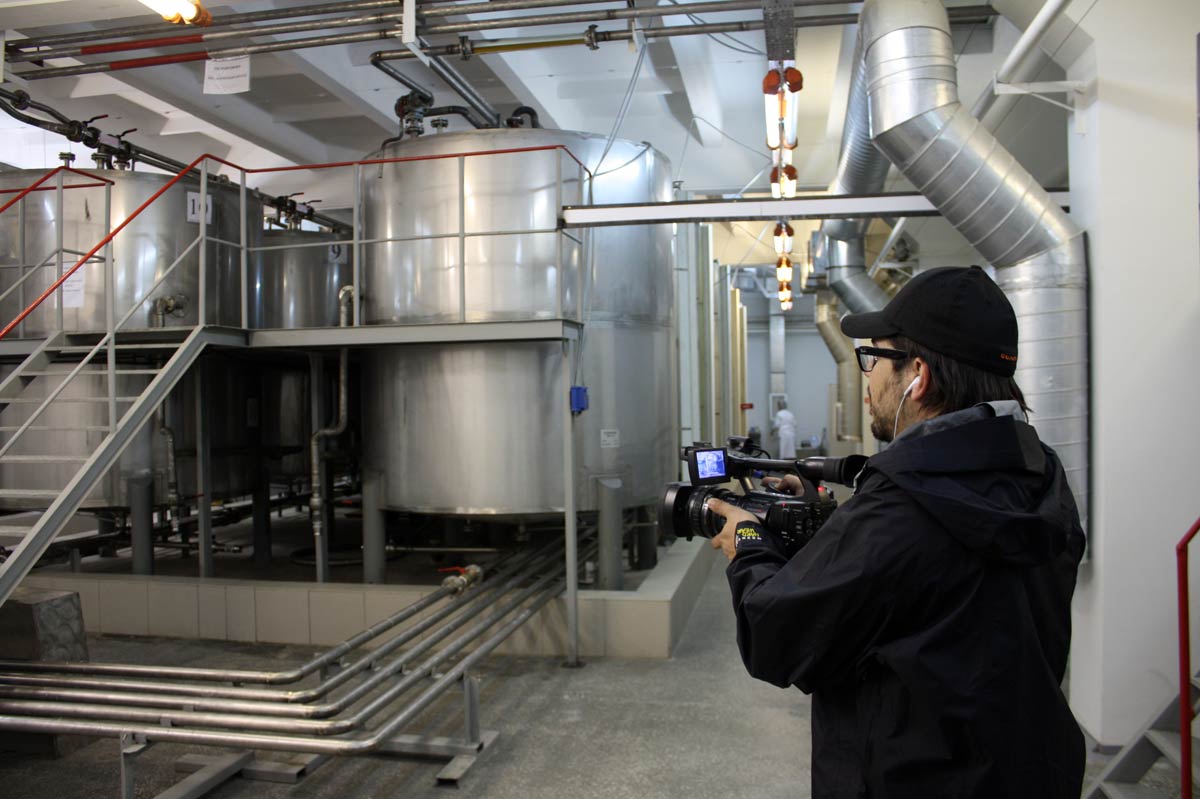

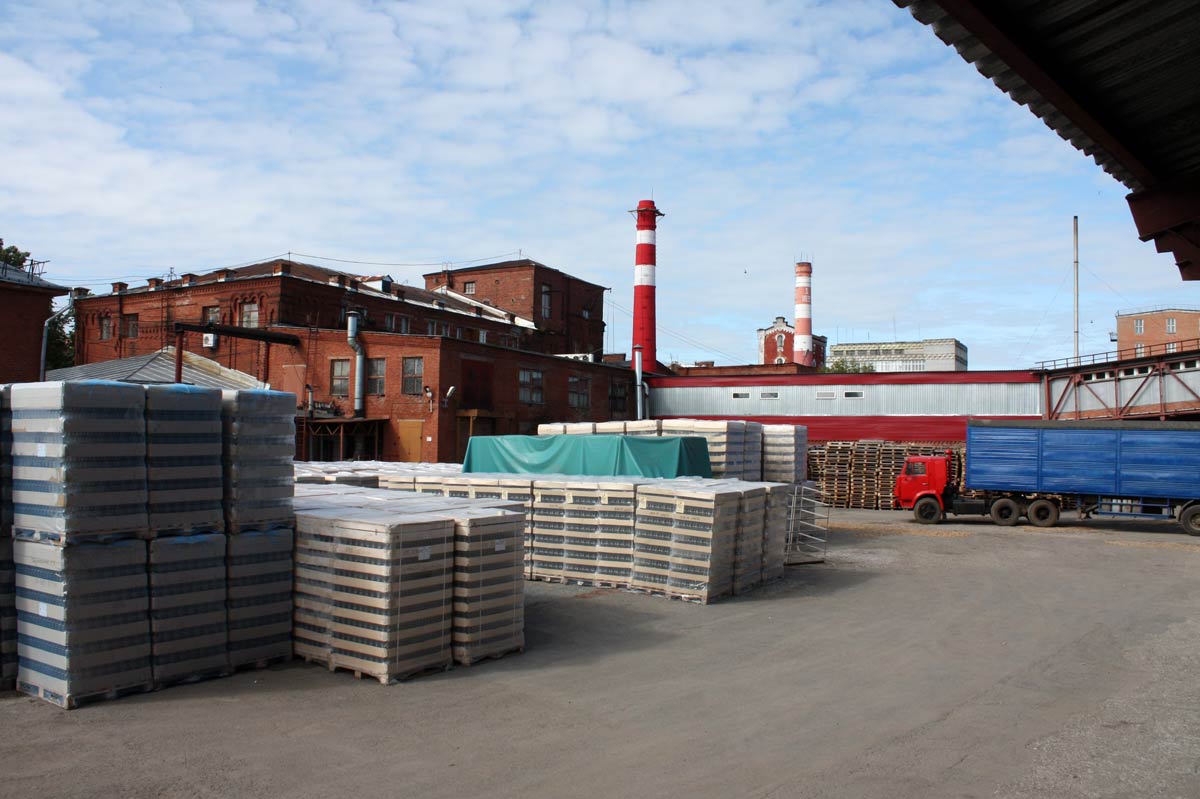
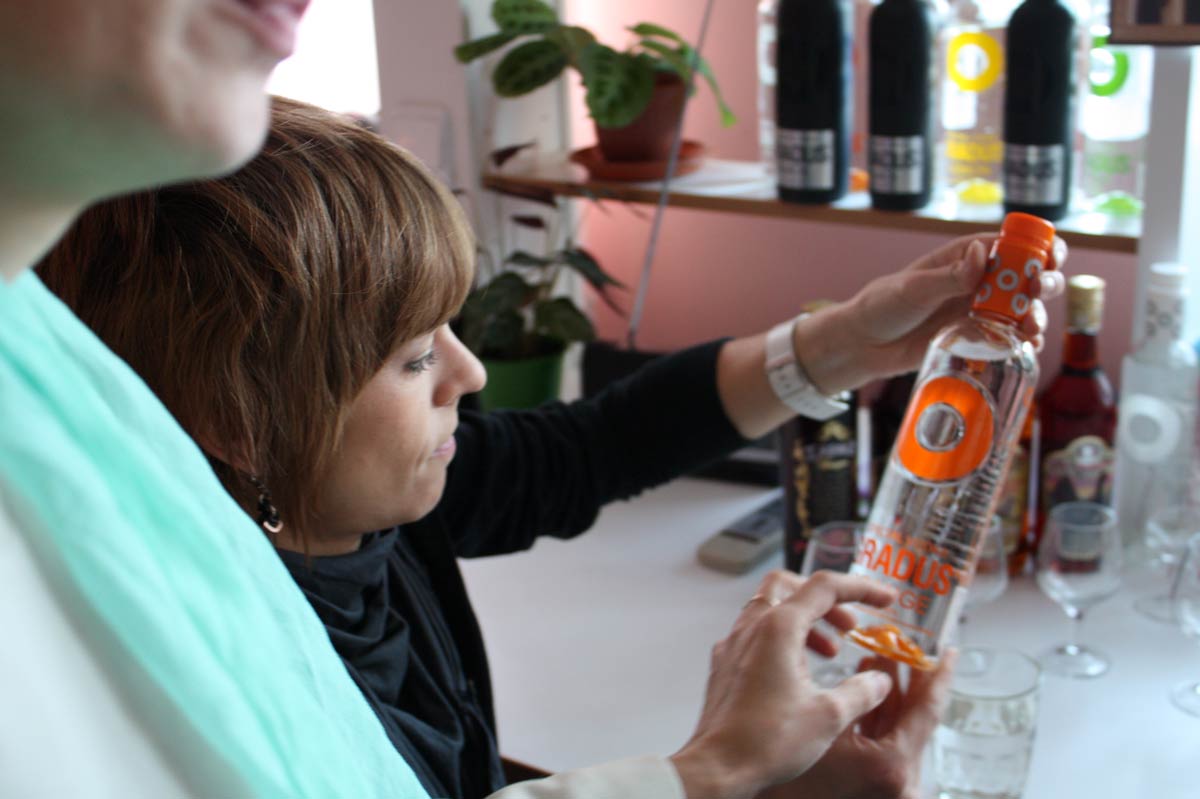
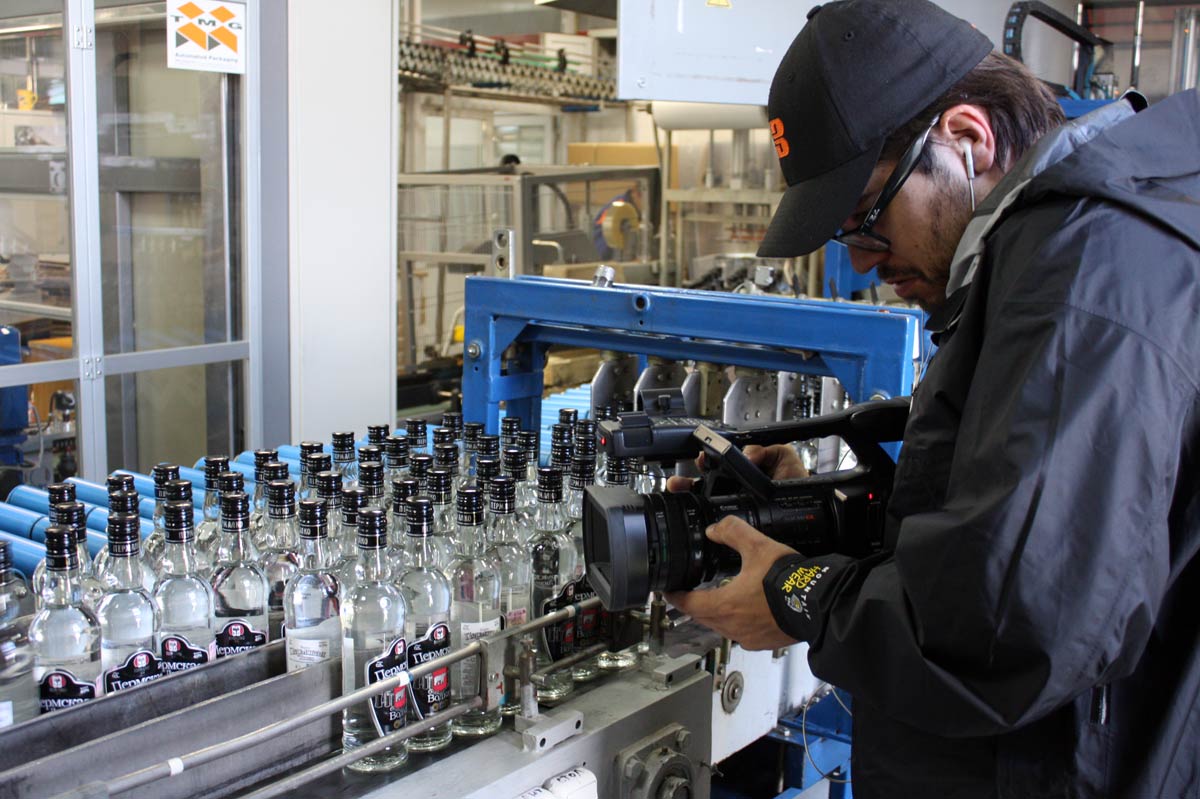
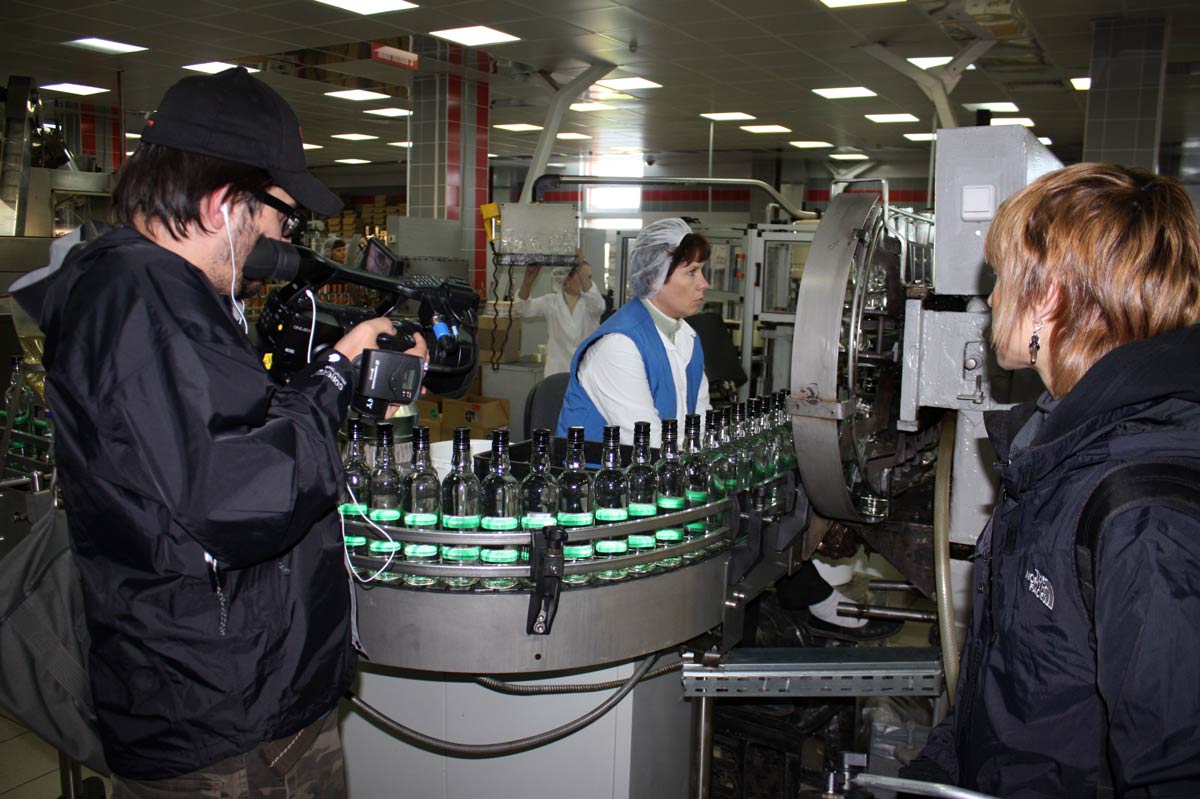
Amber Beverage Group to acquire Russian vodka distillery
|
Though the origin of vodka remains a disputed honour between the Poland and Russia, there’s perhaps no country more closely associated with vodka than Russia. After all the country is one of the largest consumers of the spirit in the world. So they really do know a thing or two about how to make it.
6 best Russian vodkas | The Independent
|

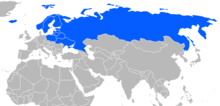

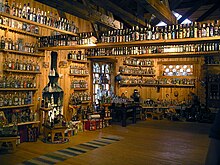
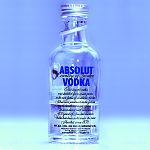



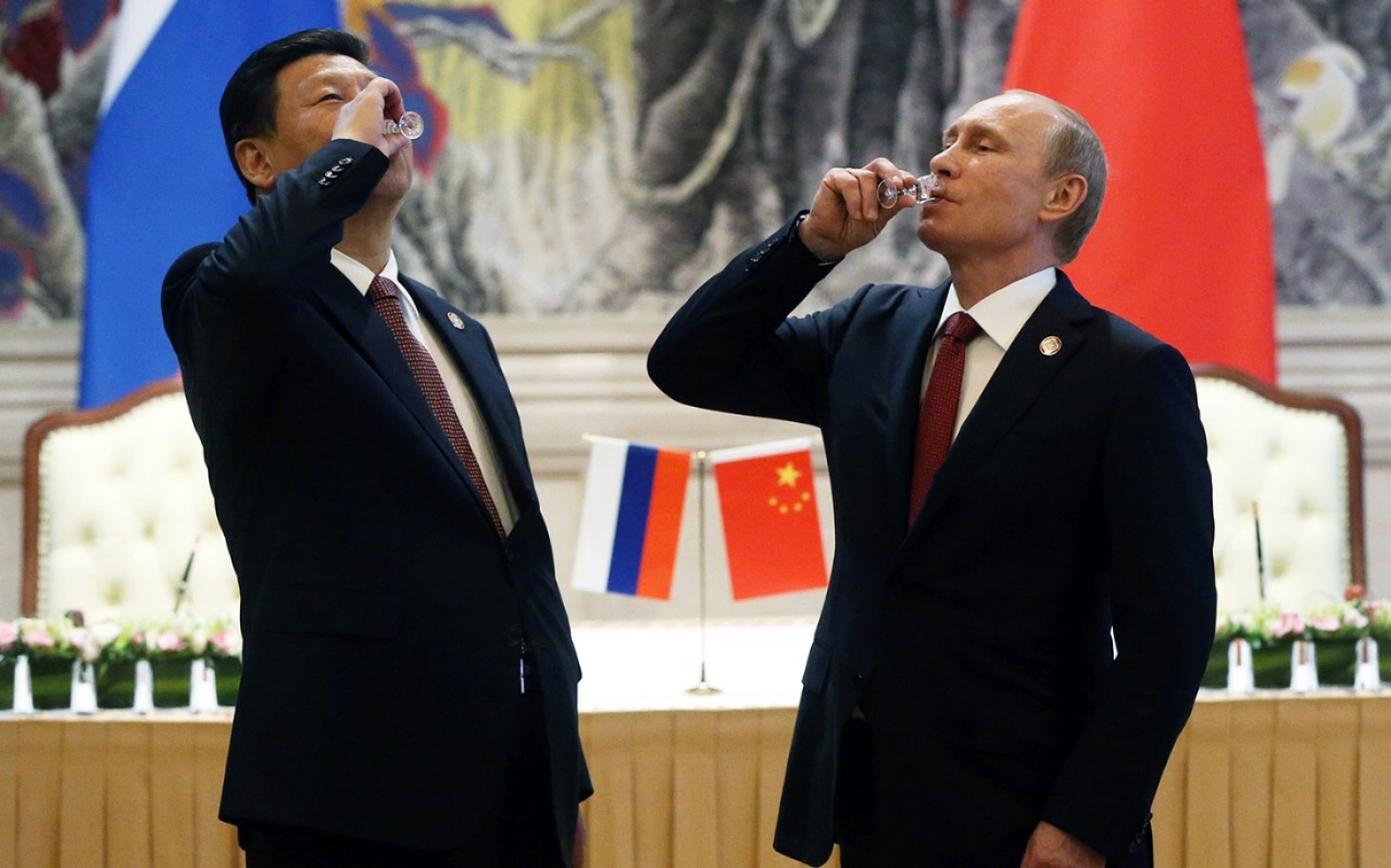








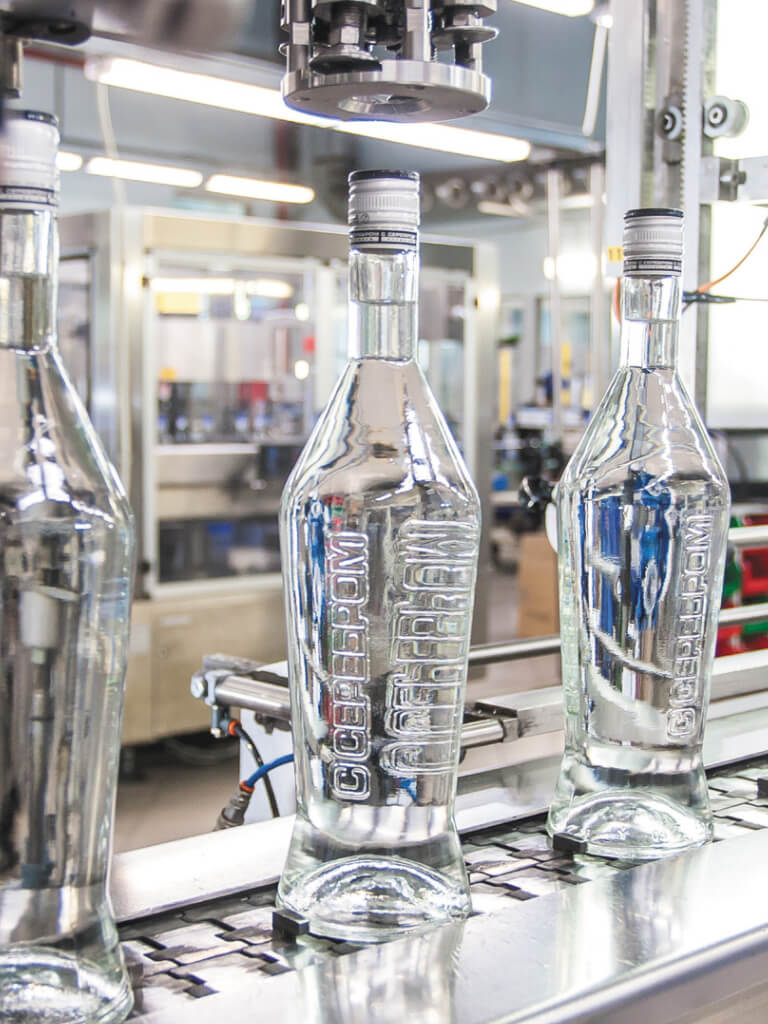


 选择“Disable on www.wenxuecity.com”
选择“Disable on www.wenxuecity.com”
 选择“don't run on pages on this domain”
选择“don't run on pages on this domain”

